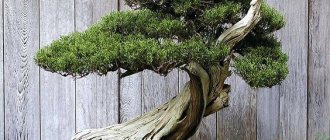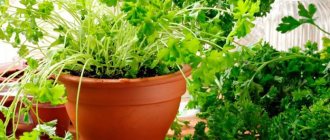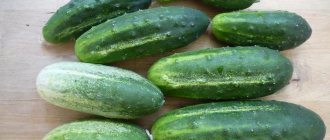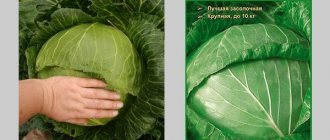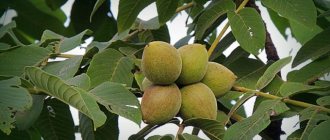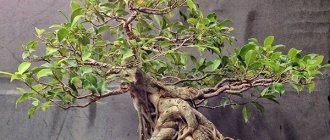Official information
Applicant and originator of the variety LLC "Gavrish Breeding Firm" Moscow Russia. They submitted an application for admission to the register of selection achievements back in 1998, and in 2001 the variety was entered into the register under number 9806059.
The registration commission approved the variety for use in all regions of the Russian Federation, and “Bonsai” is recommended as an early ripening variety, for growing indoors, on balconies and loggias.
Pest and disease control
Bonsai tomatoes are endowed with fairly strong immunity, but only if they grow in a mild climate. They get sick mainly due to inappropriate care:
- overwatering: roots rot, leaves turn yellow;
- high humidity in the room: leaf plates partially begin to rot;
- damage to indoor plant insects.
When cultivated outdoors, Bonsai tomatoes are easily affected by late blight and other diseases inherent in nightshade crops.
Characteristics and description
The ripening of indoor fruits begins 95-97 days after all the sown living seeds have fully sprouted.
The vegetative form of a tomato does not exceed 50 cm, the plant is determinate and independently forms as a standard.
The leaf blade is medium in size, dark green in color and slightly wrinkled. The inflorescence begins to form above the 6-7th leaf, and then separation by the leaf no longer occurs. The inflorescence itself is of an intermediate type.
The Bonsai fruit is round, smooth, glossy. The color is bright red. The weight of the ripe fruit varies between 25-30 g. When you cut the tomato, you can see two seed nests with small seeds.
The tasting rating given by the commission is “excellent”. Those who have already grown this variety of tomato fully agree with this assessment. The tomatoes are pleasant, not hard and quite dense. The taste of the fruit allows you to understand that this is the same delicious tomato that you dream about all winter, but with “Bonsai” you can afford the luxury of taste even in January.
The sugars and organic acids in the fruit are in a very balanced state, and this makes the taste very pleasant.
When growing a Bonsai tomato, reviews, photos, and yields can be seen with your own eyes, but the register of varieties indicates that each bush produces 1 kg of fruit of high commercial quality.
Tomato blossom
If the plant develops normally, it will bloom after a while. But its flowering is not particularly beautiful. The usual small pale flowers appear on the bushes. They all have both male and female reproductive cells. For this reason, the plant does not need to be artificially pollinated or pollen shaken. When clusters with ovaries have formed, it is recommended to remove the branches that are on the side and have not yet bloomed.
This will help improve the development and appearance of fruits. But this can spoil the appearance of the bushes. After flowering, small tomatoes appear. Subsequently, they change in color. They are initially green, then turn yellow and orange. Finally they turn red.
It is not necessary to wait until the fruits are fully ripe. You can also use unripe tomatoes. By the way, they are not afraid of the cold on the windowsill. So, bonsai tomatoes are an excellent plant that can be used to decorate window sills and balconies. In addition, with proper care you can get a good harvest in the form of miniature tomatoes.
Advantages and disadvantages
For those who want to decorate their home and have a harvest, the Bonsai variety is the most suitable, given a number of its advantages:
- ease of cultivation;
- suitability for rooms, loggias, balconies;
- there is no need for garters and supports;
- excellent taste;
- high commercial quality hearths.
Reviews from vegetable growers and those who decorated their homes with pots of tomatoes instead of flowers are unanimous - the variety is excellent for indoor conditions and has no drawbacks.
Description of the Bonsai tomato variety
Bonsai tomatoes belong to the determinate type, with a possible growth height of no more than half a meter. The plant is independently capable of forming in the form of a trunk. The stems are strong, with a fleshy structure and do not need to be fixed to a support. The leaf component is abundant, but the leaves themselves are small in size, wrinkled and rich green in color. The initiation of inflorescences occurs above the 6th leaf - no further delimitation by leaves is observed.
The Bonsai tomato variety has compact bush dimensions, as it was obtained specifically for growing in separate flower pots as an ornamental plant. This does not exclude the possibility of planting in the garden - usually Bonsai tomatoes serve as decoration for paths or flower beds.
Description of fruits
Bonsai tomatoes are the same as cherry tomatoes in appearance, which are characterized by:
- regular rounded shape and glossy surface;
- light green color - in the technical stage of ripeness, bright scarlet - in the consumer stage;
- dense, juicy pulp and thin shell;
- slight seed inclusion;
- small size, weighing up to 25 g.
The taste characteristics of Bonsai tomatoes vary depending on the climatic conditions of cultivation - the more sunlight, the sweeter and more aromatic they are.
Features of growing the variety
When growing a tomato in a room, you need to consider that it needs:
- south window (at least, east);
- a pot with a capacity of at least 1 liter;
- nutrient soil;
- lighting (if cultivation occurs in the winter months).
The same requirements are put forward for balconies and loggias. However, in this case you still need to maintain the temperature.
Optimal conditions for tomatoes are an air temperature of 22-24 ᵒC during the day, and 16-18 ᵒC at night.
If everything is clear with the direction of light and temperature indicators, then you need to purchase a pot. Plants look ridiculous in old pots, tin cans and other utensils. The best home for your tomato plant is a ceramic pot, but plastic flower pots will also work.
Features of the Bonsai variety and its differences from other balcony varieties
A special feature of the Bonsai tomato is the possibility of cultivating it not only on balconies, but also in open ground, which gardeners in the southern regions have successfully taken advantage of. And most importantly, the taste, according to tomato growers, is very good.
Table: Bonsai and similar varieties, what are the similarities and differences
| Variety | Which group do they belong | Ripening period | Fruit weight | Productivity | Sustainability |
| Bonsai | Variety | Early ripening (94 – 97 days) | 24 – 27 g | 1.0 kg per bush | There is no information in the State Register |
| Balcony miracle | Variety | Medium (up to 100 days) | 10 – 20 g | up to 2.0 kg per bush | There is no information in the State Register |
| Cherry with cream | Hybrid | Mid-season | 25 – 40 g | 4.7 kg per 1 m2 | There is no information in the State Register |
| Pearl | Variety | Super early | 15 – 18 g | 0.8 kg per 1 m2 | There is no information in the State Register |
The Pearl tomato, like Bonsai, grows well on a balcony or in a room, even in a hanging pot
Table: advantages and disadvantages of Bonsai tomato
| Advantages | Flaws |
| Possibility of growing at home and in open ground | No significant deficiencies were identified during cultivation |
| Early fruiting | |
| Simple agricultural technology | |
| High taste, universal use | |
| Decorativeness of the plant |
Transplantation to a permanent place
Typically, seedlings are transplanted in the phase of two true leaves. However, when growing on a windowsill, it is better to wait until the bushes touch each other with their leaves, and then plant them in separate pots.
We fill the containers in the same way as for growing seedlings. We remove the tomato sprout from the common pot, if possible without destroying the earthen lump.
We make a hole in the center of the pot and plant a tomato bush there, deepening it down to the cotyledon leaves. Sprinkle the rhizome and compact the soil.
Watering is carried out with warm water so that excess water certainly drains into the pan through the drainage hole.
Growing in a greenhouse
If we consider this variety for a greenhouse, then planting it in beds is not profitable, since the yield is not high and the greenhouse structure itself will be empty.
Planting a variety in hanging pots or on greenhouse shelves in pots is a completely different matter.
If cultivation is carried out in pots, then they are hung so that at least 60 cm remains from the ceiling, since the variety is standard and will not hang down.
If the greenhouse is equipped with side shelves, in one or several rows, then pots with seedlings or plants already planted individually are placed on them. In this case, you need to take into account the nuance that the tomato bush should not touch the film. Because condensation can form on it, which is a medium for the development of microscopic fungi.
The shelves should also be strong, this will help avoid collapse, because the pots weigh at least 1.5 kg, and 10 pots are already 15 kg, which is significant for a fragile shelf.
Growing on the balcony
If the balcony is completely glazed and insulated, then by choosing a “Bonsai” tomato, you can start growing it on the balcony in April. Seedlings must be grown in one pot indoors, sowing in March, and then the plants must be planted in individual pots and placed on balcony window sills and shelves.
As with growing in greenhouses, on the balcony you can place pots not only on window sills, but also on adapted shelves, racks, and hanging flower pots.
If the balcony faces south, then you should take care of shading, since the heat adversely affects the plant.
Planting seedlings and care
It is recommended to plant each plant in a separate container. Pots are used for this. But many people plant seedlings in long boxes. Initially, it is watered, and then removed from the cups and placed in pots. It is worth remembering that bonsai tomatoes love the sun, so it is recommended to place the pots in sunny places. Owners need to monitor the soil, as it should not be waterlogged or dry. If the weather is hot and dry, then the plant is watered every other day.
There is a little trick that helps speed up the development of tomatoes and the appearance of fruits. To do this, the roots are torn. The owner should grab the stem and carefully pull it up. In this method, small roots are torn off. After this procedure, watering and hilling are carried out. During development, it is recommended to fertilize tomatoes. For example, it is worth periodically pouring a couple of spoons of wood ash under a bush.
Preparing seeds for planting
Many gardeners are of the opinion that hybrid seeds purchased in bags do not require special preparation. Seed material should be disinfected if it is purchased from strangers.
Packaging with Bonsai tomato seeds
Common preparation involves moistening the seeds and wrapping them in a damp cloth. In 1-2 days the grains will be ready for planting.
High-quality seeds germinate without soaking, so the preparatory process can be easily simplified.
Bush care
To grow bonsai tomatoes successfully, it is important to periodically water and feed the plants. Watering is carried out only with heated water in the morning. All soil in the pot should be completely moistened; the frequency of watering depends on the air temperature, lighting and humidity.
You can use the leaves to determine whether watering is needed or not. If the leaves are bright, juicy and elastic, then the plant has enough moisture. But if elasticity is lost and the leaves begin to droop, it means insufficient watering.
After transplanting to a permanent place, after 14 days it is necessary to feed the bushes with nitrogen fertilizers. To do this, 3 grams of ammonium nitrate are dissolved in 1 liter of water, and 100 grams of solution is poured under the root of each bush. After 14 days, another fertilizing is carried out, 3 grams of potassium sulfate is dissolved in 1 liter of water, and 100 grams of fertilizing is poured under each bush. After another two weeks, the same amount of fertilizer is used, but this time superphosphate is used. Thanks to the alternation of different substances, the plant will grow stronger faster and the flower clusters will be planted on time.
Seed care
Until the shoots appear, the room temperature should be about 25 degrees day and night. Borings will appear after 4-5 days. When all the seeds sprout, the air temperature can be reduced to 20 degrees during the day, and at night to 15 degrees. Thanks to the coolness of the night, the seedlings will not stretch upward excessively, but will be better able to take root. When growing seedlings, the room should be as light as possible; a phytolamp can be used for additional illumination.
It is necessary to water the seedlings with slightly warmed water; cold watering is unacceptable, as the seedlings can become infected with a fungal disease. For proper cultivation, it is advisable to use settled or rainwater, which should be watered in the morning. Seedlings should not be over-watered, as the root system may rot. There is no need to feed the seedlings with any fertilizers if the soil was purchased at the store or properly prepared yourself. When the shoots begin to stretch, it is necessary to add soil mixture, as a result, the container will gradually fill almost to the top.
How to grow tomatoes at home on a windowsill?
Growing Bonsai tomatoes in pots is no more difficult than growing any indoor plants. All you need for this:
- seedling;
- properly prepared soil;
- containers.
Otherwise, indoor tomatoes are unpretentious, and basic step-by-step instructions will help you plant them correctly.
Soil preparation
Heavy (clayey) soil is not suitable for Bonsai tomatoes. To plant a crop, it is better to buy ready-made soil, although you can make it yourself by mixing:
- wood ash;
- fertile soil (cleared of organic debris);
- peat;
- some river sand.
The base for the soil should be thoroughly mixed and then disinfected with a weak solution of manganese.
Important! Not only the soil needs to be treated for disinfection, but also the containers in which the tomatoes will grow.
Step-by-step instruction
Tomato seedlings are grown in plastic or wooden boxes and then transplanted into separate pots. The entire culture propagation procedure is carried out in accordance with the following step-by-step instructions:
- Moisten Bonsai seeds and wrap them in a wet towel (napkin). The sprouts should hatch in 1-2 days.
- Place the sprouted seeds to a depth of 1 cm in moist soil. The soil should be sprayed with small portions of water 2-3 days before planting tomatoes.
- Cover the boxes with seedlings with film or glass. After 5-6 days, when the shoots appear, you need to select the strongest ones from the sprouts and pin them.
- Prepare pots for young tomatoes: fill the container ¼ full with expanded clay or other drainage materials, then top up with prepared soil.
- Plant the selected seedlings in moistened potting soil and water.
After this, all that remains is to wait for the sprouts to strengthen and the bush to grow. During this period, it is very important to provide the crop with optimal lighting.
Important! If you select high-quality seeds, you can skip the first stage of preparation for planting - they will germinate without additional moisture. If there are doubts about the quality of the material, then preliminary germination is necessary. It is also advisable to carry out preventive treatment to disinfect suspicious seeds.
How to grow seedlings
First of all, you need to determine how many seedlings will be needed. It is important to consider that only one bonsai tomato bush will fit in one pot. When growing on a balcony, loggia, for example, in a box or other container, the distance between seedlings should be approximately 30-35 cm. Taking this distance into account, the number of seeds that will be sown is calculated.
When buying seeds, it is impossible to predict exactly what the germination percentage will be. It is advisable to buy seeds for growing with a reserve of 2-3 seeds. The seed material is laid out on toilet paper moistened with clean and heated water, this paper is placed on a saucer. After laying out the seeds, the saucer is placed in a plastic bag and placed in a room with a temperature of 25 degrees.
After about 2-3 days, the seeds will develop white roots, but non-living seeds will not develop roots. Seeds with roots will later be planted in the ground.
Planting in garden beds
First of all, you need to grow seedlings, for which you sow the seeds in small cups. They do this at the beginning of March, so that after 55-60 days, that is, somewhere at the end of May, they can plant the plants in the garden beds. If you want to get an early harvest of tomatoes, then the seedlings are transplanted at the beginning of the month. In this case, it must be covered with film, thus protecting it from possible frost. Tomatoes are planted at the rate of three bushes per 1 square meter. m. It is not recommended to do this if eggplants, potatoes or peppers previously grew on this piece of land. As you know, the “bonsai” variety is not afraid of shaded areas, but it is recommended to plant it in a warm, sunny place where there are no drafts.


